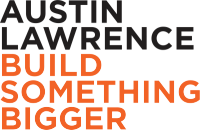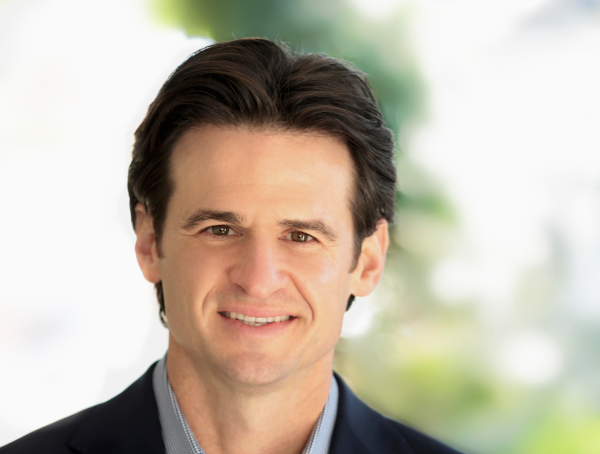How Aventri CEO Jim Sharpe not only pivoted the business to support online events but is now helping to define what the future of meetings looks like with its customers.
As Jim Sharpe stepped into the CEO position at Aventri in January 2020, he quickly started executing on his 100-day plan.
It included a three-part mandate: to find strategic clarity in the business, create a culture of excellence and transparency, and find operating leverage in the finance of the company as a group.
“We had just formulated our leadership charter (in terms of who we were going to be as a team) and a three-part mandate. We were off to a great start—and what could go wrong?” said Sharpe.
Six weeks later, the phone rings and it becomes apparent that some changes in the meetings market were afoot.
“The first phone call I had was about a dispute over whether our team was allowed to wear masks at an event occurring in early February. That turned out to be the smallest problem of the year,” he said.
When Mobile World Congress in Barcelona was canceled, it sent a shockwave across the events business.
“We knew it was going to be rough sledding for a while when we saw a 70 percent drop in registration volume across our system and had at least a hundred clients asking for an extension in their contracts,” he noted.
Aventri is a leading SaaS provider in live event management, powering about 90,000 events per year from 1400 different enterprises. It provides expertise in terms of data and analytics back to the marketing executive to help make sense of the return on investment of their events and track attendees through their journey.
As a company with $50 million in top-line revenue and approximately 250 employees in an industry that was a center target for destruction by COVID-19, Sharpe obviously had a lot to deal with in terms of a response plan.
The first thing he remembers putting in place was a robust communication plan internally and externally. For example, they started conducting unannounced test shutdowns of their offices with only a few hours’ notice to tell the team we were going virtual that day to see whether or not they could hold up under a virtual operating environment.
“The good news was that we could handle going virtual as an organization—I think because we were relatively distributed to begin with,” he said.
Sharpe also implemented a lot of team communications such as written updates and town halls, borrowing from some of the tactics he’d seen on television in the early days of the pandemic to conduct open and candid Q&A discussions with teammates about what was going on around them.
“Some of those discussions were very difficult, but I think that helped everybody feel like at least we could trust each other and that we were doing the best we could to navigate the situation,” he said.
Hoping for the best (but planning for the worst)
Because of the crazy rate of change, Sharpe transitioned board meetings from quarterly to weekly to provide investors updates on business conditions and input into decision-making at a granular level.
“I think that scenario planning allowed us to act early, even though they griped about the weekly frequency,” he said, “If there's anything that I think helped position us for the year, it was the fact that we faced the reality of our situation early on.”
Their best case was a May 2020 recovery, which proved to be comical. But they were hopeful.
“We also had an August recovery and a Spring 2021 recovery scenario,” he said. “Guess which one we're living in now?”
Of course, the worst-case scenario played out, and unfortunately Aventri had to make difficult decisions around cost management including some staff reductions. But once survival had been addressed, Sharpe and his team started asking how they could capitalize on what was happening now and scenarios they thought likely to play out.
Keeping a Strategic Focus on the Enterprise
Sharpe and his team started talking to the market right away in the form of customer and prospect surveys. Most (89 percent) said that virtual would play a major role in event management, even when live events came back.
That turned out to be the pivot point.
“When we took that data and then we went to our customer innovation council, (a quarterly meeting held with customers) it helped us solidify a thesis that we needed to dive into a long-term view of hybrid events and what the enterprise would need when things settled down in the future,” said Sharpe.
The first step was to partner with a few virtual-only providers that had been funneling business to them in the past. But because of the difficulty inherent in guaranteeing the same level of service and overall alignment, that strategy turned out to be short-lived.
Aventri then developed its own virtual event platform based directly on customer feedback.
“At first, many of our customers didn't know what they wanted,” said Sharpe. “They just had to get a virtual event up online in the next five days, for example. But, as everybody started to get a better feel for the capabilities they would need, that’s when we started to formulate what our beta would look like.”
The Aventri team went into “nights-and-weekends-mode” and had daily check-ins globally, seven days a week for three months. That sprint was what Sharpe credits the success of the pivot.
“Remember, we weren't virtual event people— [our business was] created on live events. So, building virtual event technology on top of our platform was not an easy feat. We did it. But a lot of it just came down to the aggression and the hustle that we had.”
The team took the initial features and feedback from the beta and then leveraged them into the full release, which now allows up to 10,000 attendees.
“Keep in mind that we are not chasing a lot of the hype around the one-off event that we think is going to churn out there in the market. We are looking for what a real event planner wants in the future and making sure that as we develop a product that ties back to that integrated experience,” he said.
In the summer of 2020, Aventri went to its board and investor base (which includes a few private equity funds) to raise a significant round of capital so it could not only shore up the business, but also to lean into a new, hybrid event future.
“We proved our ability to survive and gained our investors’ confidence. And it was a great statement to the market when our investors backed us, willing to bet on us and the event space again.”
The best of both worlds
“We all agree that when we go to a virtual event now, it's pretty flat,” Sharpe said. “People are trying some speed-dating-type gimmicks, and where it does have some advantages over live attendance, it’s one thing to put your booth up on an exhibitor floor, and it's another to have a virtual presence.”
However, the virtual platform has opened up some new revenue opportunities. For example, a live event of the future may have 50,000 attendees walking a trade show floor, and an additional two million attending through a virtual interface.
That also allows for attendee flexibility, where they might attend in person for two days out of four and attend virtually for the last few days if they had a scheduling conflict or to save on the total cost to attend.
“The hybrid model of events is going to be strong, especially when you see the virtual elements kick in. You're going to be able to expand the overall attendance because you have new ways of reaching them. We’re very excited about that. The hard part though is how do you actually provide that experience?”
Currently, the virtual event model is taking hold, albeit on a smaller scale. But in some instances, events have been able to double their normal attendance virtually and gain participation globally that has significantly expanded their geographic scope.
“We have customers that had been previously paying us low six figures per year, that we now expect to move into the low seven figure range on an annual basis because they're ramping up their virtual events in tandem with their live event business when it comes back.”
Because it’s not possible to replicate the “serendipitous meetings” virtually, Aventri is also investing in superior networking opportunities on its virtual platform that will also translate well into the hybrid model in the future.
In the new Aventri Virtual 2.0 platform, for example, networking tools bring like-minded attendees together through AI-driven matchmaking and smart recommendations. Attendees can view profiles, arrange video chats and connect over shared interests, like they do at live events.
Instead of a speed-dating format for networking, Aventri’s platform provides the ability for attendees and exhibitors that want to meet each other to go to the lobby, click on a logo, and launch a video chat where they can exchange sales materials and their contact information real-time.
“It's like visiting a booth at a trade show,” he said. “And the exhibitor is able to score that lead and track their overall performance at that show through our technology. We’re [also] releasing some new chat technologies that will allow people to interact more,” he said.
In anticipation of future hybrid events, Aventri revamped its mobile app, too. Now, virtual platform and app work in sync.
Wherever attendees happen to be – in the meeting venue or across the globe – they’ll be able to explore and connect in real time. Advanced hybrid technology will bring in-person and online audiences together and expand networking opportunities exponentially.
What’s Next?
Sharpe and his team envision that when live events come back, they will come “storming back with a vengeance.” And even though the rapid rate of change in the event industry feels like a lot longer than one year, Sharpe’s happy with what they did in retrospect.
“Sitting here now a year later after all we've been through and feeling like our total addressable market is a multiple of what it was last January, is an unexpected place to be, but we're also fired up for where we sit in that market as far as our product roadmap,” he said.
This article was based on Jim Sharpe's appearance on our podcast, SaaS Backwards, and additional input from Aventri.





